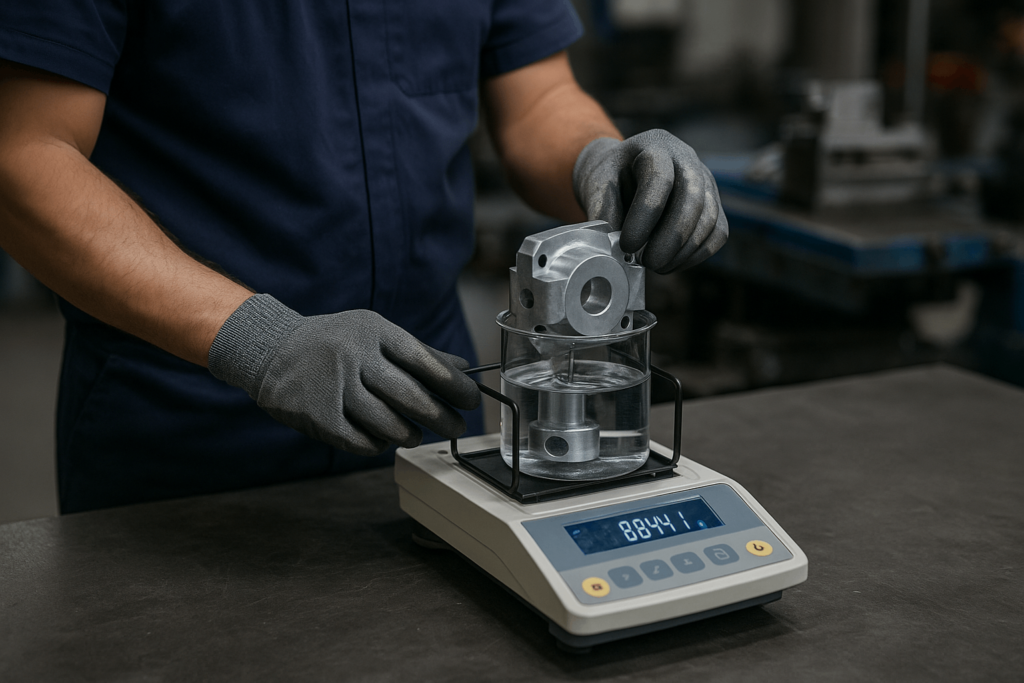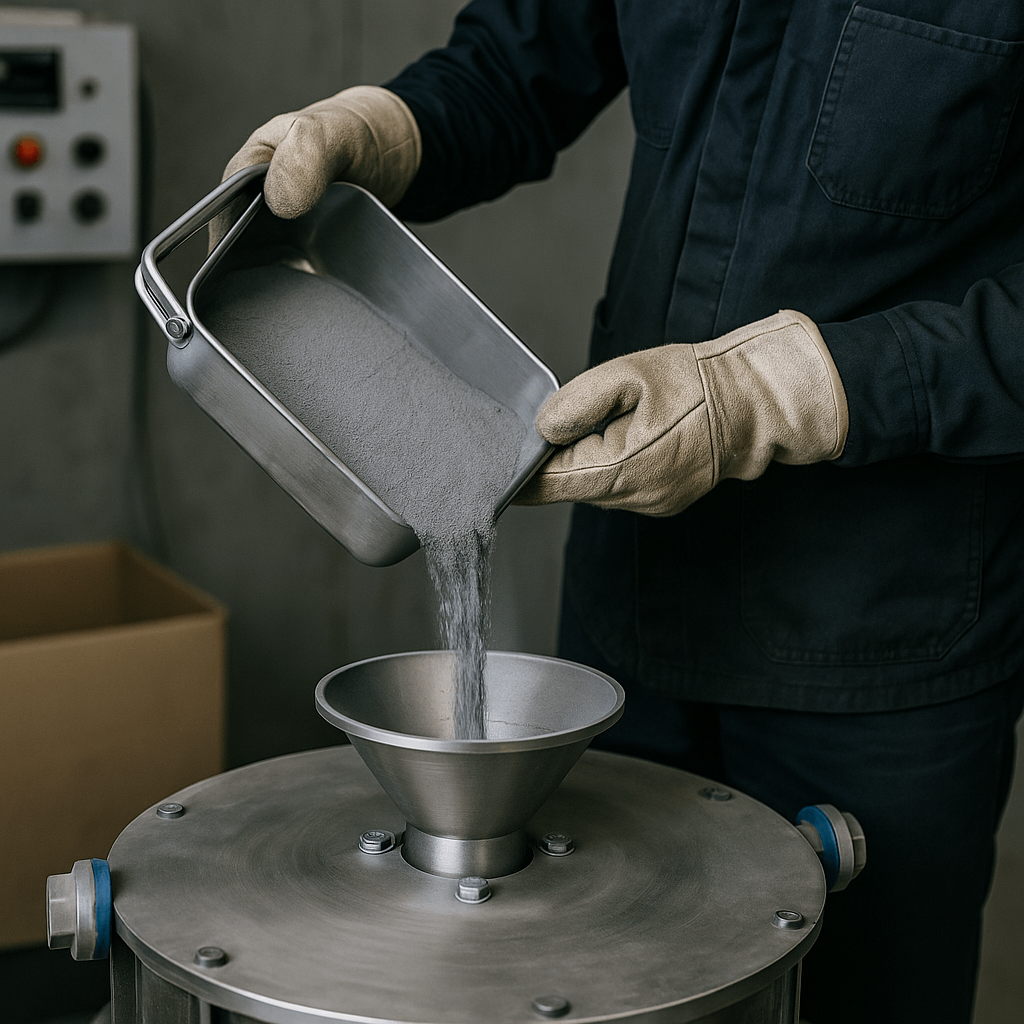Introduction
For procurement managers, product designers, and OEM buyers sourcing zinc components, one physical property underpins everything from pricing to structural integrity—density.
Often overlooked, zinc density influences material weight, logistics costs, and design feasibility. Whether you’re sourcing precision die-cast components, battery-grade powders, or materials for bright zinc plating, understanding zinc’s behavior across applications is vital.
This article explores what is zinc density, how it behaves in various forms and alloys, and how procurement decisions are directly impacted. Backed by real use cases, measurement standards, and supply chain considerations, this guide is tailored for decision-makers navigating zinc alloy sourcing.
Understanding Zinc Density — Core Values and Procurement Relevance
At 20 °C, pure zinc has a density of 7.14 g/cm³ (7140 kg/m³ or 445.9 lb/ft³). This figure is used for solid forms in casting, machining, and forming applications.
Table 1: Zinc Density Conversion
Unit Value g/cm³ 7.14 kg/m³ 7140 lb/ft³ 445.9
For buyers managing BOM weight limits, density allows accurate volume-to-mass estimates. This reduces miscalculations in shipping quotes, freight classification, and international standards compliance. In aerospace or automotive supply chains, even minor weight deviations can trigger revalidation.
Zinc in Different Forms: Impacts on Design and Sourcing
Solid Zinc (cast or rolled) maintains its standard density. It’s used in brackets, enclosures, and structural inserts. Consistency here supports predictable mold yields and cost-per-unit modeling.
Molten Zinc, critical in galvanization and die casting, has a lower density—6.57 g/cm³ at melting point (419.5 °C). This matters when sourcing casting molds or calculating required zinc volumes per m² in galvanizing tanks.
Zinc Powder exhibits bulk densities between 3500–4500 kg/m³. This variation stems from particle size, shape, and packing methods. In battery cell production and powder metallurgy, bulk density affects charge density and sintering time.
📌 Tip: When sourcing powder zinc, request the bulk density profile. Differences of 10–15% can alter packing efficiency, tool wear, and pressing parameters.
Zinc Alloy Densities — And Why They Matter to Buyers
Zamak Alloys and Procurement Metrics
Zamak series alloys dominate zinc-based die casting. Their compositions directly influence density, which affects casting mass, cooling rates, and even tooling wear.
Table 2: Common Zamak Alloys
Alloy Al (%) Cu (%) Density (g/cm³) Procurement Impact Zamak 3 3.5–4.3 ≤0.25 6.7 Lower cost, standard strength Zamak 5 3.5–4.3 0.75–1.25 ~6.8 Higher strength, slight cost increase ZA‑27 25–28 2–2.5 ~6.6 Best strength-to-weight ratio, higher tooling demands
Zamak 5 offers slightly higher strength due to copper, but also raises density by ~1.5%. For buyers evaluating shipping weights, part cost, and mechanical performance, such differences inform design-for-manufacturing (DFM) decisions.
YISHANG ensures all zinc alloy batches comply with ISO 9001 and RoHS. When working with alloys with zinc and aluminum, our lab verifies compositional density with ±0.5% tolerance.
Zinc Compounds and Specialty Applications
In bright zinc plating, buyers often select zinc chloride or ammonium-based formulas. Zinc oxide (ZnO, 5.6 g/cm³) is common in electronic coatings, while zinc chloride (ZnCl₂, 2.91 g/cm³) serves in galvanizing additives.
When budgeting chemical volumes, density values support accurate volume-to-weight conversions. This also impacts hazardous material declarations and import duties.
Measuring Zinc Density: Methods for Quality Assurance
Archimedes’ principle remains the benchmark. It involves weighing parts in air and submerged in water, then calculating density from displacement. This is useful in incoming material inspections and verification of casting consistency.
Pycnometry helps determine powder density. It’s common in battery and sintering-grade zinc assessments.
Example: If a 10 kg casting displaces 0.015 m³ of water, the calculated density is:ρ = 10 kg ÷ 0.015 m³ = 6667 kg/m³
YISHANG integrates these tests into every batch. For global OEMs, we attach QA documentation to each shipment, meeting EU REACH and RoHS compliance requirements.

Factors Influencing Density in Zinc Procurement
Temperature: During molten processing, zinc expands. Molds must be designed with this in mind. If not, parts may shrink, warp, or underfill. This is key in precision dies.
Alloying Elements: Brass zinc and copper compositions differ from pure zinc, reducing density slightly. Similarly, brass alloy copper zinc may offer machinability benefits but lower castability due to altered flow behavior.
Porosity and Impurities: Casting porosity reduces effective density and impacts mechanical strength. Buyers should verify this when ordering sintered or high-load zinc parts. Ask suppliers for porosity profiles or X-ray scan data if density deviation risks performance.
🎯 If sourcing zinc parts for mechanical loads, specify max acceptable density variance in RFQ.

Why Density Impacts Your Cost, Lead Time, and Function
In zinc-rich industries, density is tied to:
Part mass: Determines freight class and packaging size.
Material usage: Guides supplier quoting based on kg/unit.
Cooling times: Affects cycle speed in die casting.
Performance: For EMI shields and heat sinks, density influences conductivity and energy dissipation.
Ignoring density may result in:
Underquoted projects
Shipment overcharges
Premature part failures due to porosity
YISHANG supports buyers with design reviews to align density expectations with tooling, casting, and finishing strategies.

Application Case Studies: Density in the Real World
Die Casting – Automotive: A European EV client needed Zamak 5 brackets with tight tolerance. After comparing Zamak 3, we confirmed a density difference that lowered vibration damping by 8%. The client opted for Zamak 5, and we adjusted mold feed lines to compensate.
Batteries – Zinc-Air Cells: For a Korean energy firm, powder with a bulk density >4200 kg/m³ extended discharge time by 12%. We filtered batches by morphology, ensuring only high-density particles were used.
Construction – Rainwater Systems: A US distributor required bright zinc plating for gutters. We adjusted zinc chloride concentration to balance density and adhesion on rolled steel sheets.
These cases show that accurate zinc density is not an academic detail—it affects procurement outcomes, part performance, and client satisfaction.
FAQs: Fast Answers for Industrial Buyers
What is the density of zinc at room temperature?
7.14 g/cm³ (solid), confirmed at 20 °C.
How does zinc powder differ from solid zinc?
Zinc powder has 3500–4500 kg/m³ bulk density due to air gaps. Always ask for morphology details.
What’s the difference between zinc and brass alloy copper zinc?
Brass has copper and zinc, lowering density and raising machinability. Useful for fasteners or decorative parts.
How is density used in galvanizing?
Molten zinc at 6.57 g/cm³ determines coating weight—typically 450–600 g/m².
Can density influence pricing?
Yes. Zinc alloy cost is often quoted by kg. Inaccurate density estimates distort quotes.
Conclusion
For high-volume sourcing, density isn’t a technical detail—it’s a financial, logistical, and performance variable.
Whether you’re managing freight classes, validating alloy compositions, or estimating coating weights, understanding zinc density protects your margins and enhances part quality.
With over 26 years in OEM metal manufacturing, YISHANG supplies high-precision zinc parts to 50+ countries, with full QA reporting and ISO 9001 systems. Our density checks are part of every delivery.
📩 Contact YISHANG for custom zinc alloy parts with validated specs and reliable global delivery.

